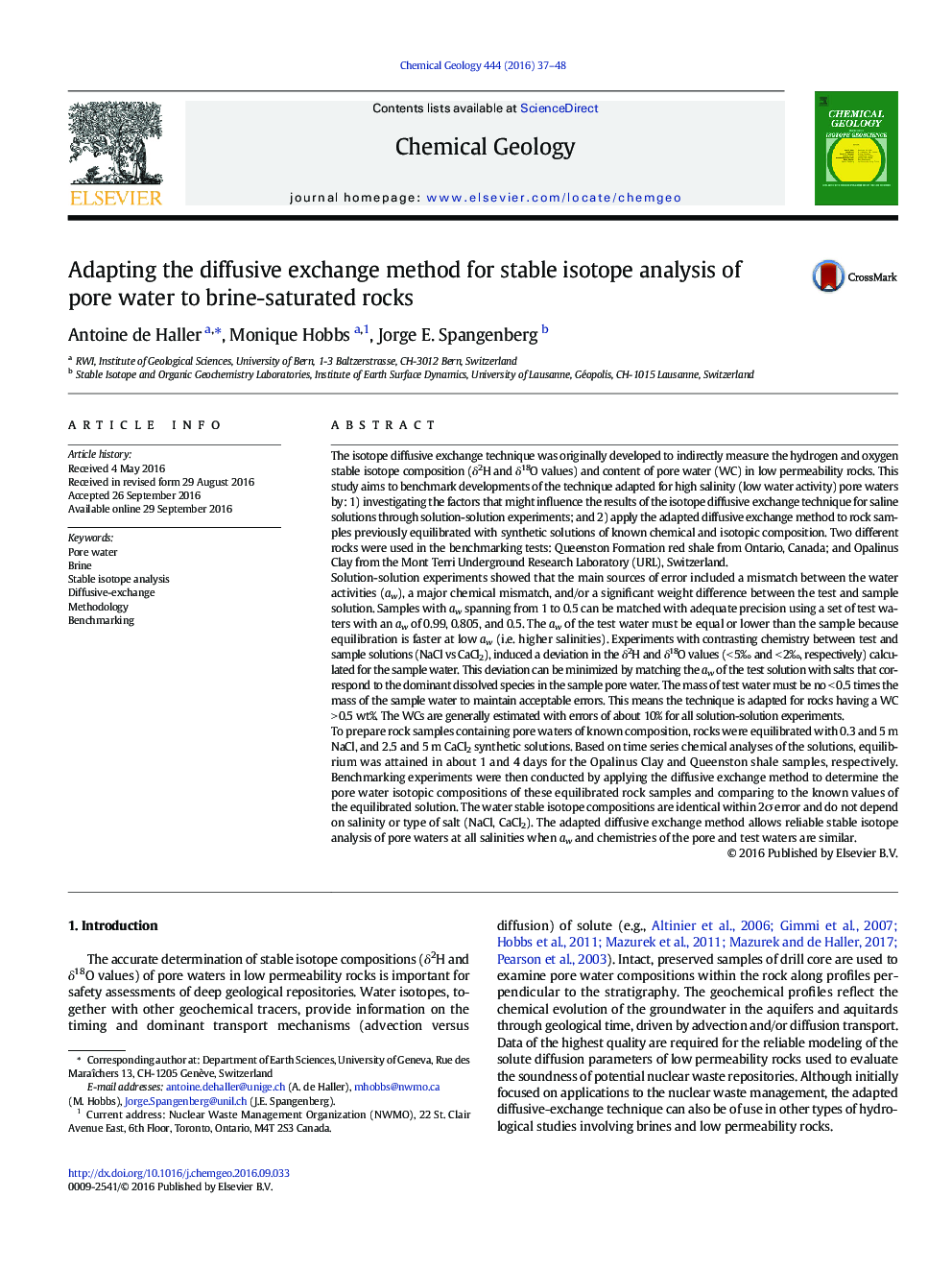| کد مقاله | کد نشریه | سال انتشار | مقاله انگلیسی | نسخه تمام متن |
|---|---|---|---|---|
| 4698168 | 1637530 | 2016 | 12 صفحه PDF | دانلود رایگان |
• Isotope diffusive exchange technique for stable isotope analysis of rock pore water.
• Methodology development for low permeability rocks saturated with brines.
• NaF treatment before distillation of CaCl2 brines for water stable isotope analysis.
• Validation of the methodology via solution-solution experiments.
• Benchmarking with clay-rich rocks saturated with solutions of known composition.
The isotope diffusive exchange technique was originally developed to indirectly measure the hydrogen and oxygen stable isotope composition (δ2H and δ18O values) and content of pore water (WC) in low permeability rocks. This study aims to benchmark developments of the technique adapted for high salinity (low water activity) pore waters by: 1) investigating the factors that might influence the results of the isotope diffusive exchange technique for saline solutions through solution-solution experiments; and 2) apply the adapted diffusive exchange method to rock samples previously equilibrated with synthetic solutions of known chemical and isotopic composition. Two different rocks were used in the benchmarking tests: Queenston Formation red shale from Ontario, Canada; and Opalinus Clay from the Mont Terri Underground Research Laboratory (URL), Switzerland.Solution-solution experiments showed that the main sources of error included a mismatch between the water activities (aw), a major chemical mismatch, and/or a significant weight difference between the test and sample solution. Samples with aw spanning from 1 to 0.5 can be matched with adequate precision using a set of test waters with an aw of 0.99, 0.805, and 0.5. The aw of the test water must be equal or lower than the sample because equilibration is faster at low aw (i.e. higher salinities). Experiments with contrasting chemistry between test and sample solutions (NaCl vs CaCl2), induced a deviation in the δ2H and δ18O values (< 5‰ and < 2‰, respectively) calculated for the sample water. This deviation can be minimized by matching the aw of the test solution with salts that correspond to the dominant dissolved species in the sample pore water. The mass of test water must be no < 0.5 times the mass of the sample water to maintain acceptable errors. This means the technique is adapted for rocks having a WC > 0.5 wt%. The WCs are generally estimated with errors of about 10% for all solution-solution experiments.To prepare rock samples containing pore waters of known composition, rocks were equilibrated with 0.3 and 5 m NaCl, and 2.5 and 5 m CaCl2 synthetic solutions. Based on time series chemical analyses of the solutions, equilibrium was attained in about 1 and 4 days for the Opalinus Clay and Queenston shale samples, respectively. Benchmarking experiments were then conducted by applying the diffusive exchange method to determine the pore water isotopic compositions of these equilibrated rock samples and comparing to the known values of the equilibrated solution. The water stable isotope compositions are identical within 2σ error and do not depend on salinity or type of salt (NaCl, CaCl2). The adapted diffusive exchange method allows reliable stable isotope analysis of pore waters at all salinities when aw and chemistries of the pore and test waters are similar.
Journal: Chemical Geology - Volume 444, 9 December 2016, Pages 37–48
